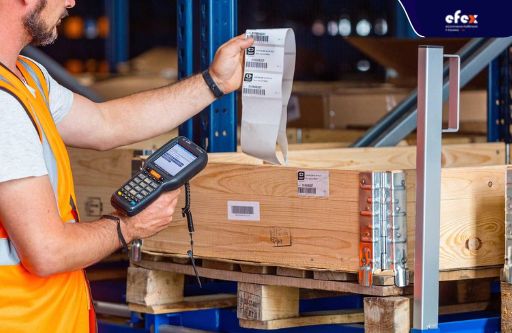
Warehousing logistics comprises tasks associated with the proper storage, security, and conservation of products during the duration of installment required within a supply chain. The warehouse is a vital part of controlling the flow of products between demand and supply. To react to market & production needs, the supervision of the resources that a company transports, stores, and manages is focused here.

Warehouse logistics' ultimate goal is to reduce operating expenses while maintaining a high quality of service. The objectives of warehouse are to find the most effective combination of various activities as follows:
One of the numerous issues you face throughout the supply chain is optimizing stock in your storage or distribution center (DC), and one of the key challenges of managing inventory in DC is restricted space. When a DC reaches roughly 85 percent capacity, it is basically out of space. This is true not only in the warehousing storage facility, but also in receiving, shipment, and all other aspects of the operation.

If you run out of stock storage space in your DC for any reason, there are a few methods for increasing capacity without having to expand.
When it comes to warehouse capacity, there is no one-size-fits-all solution. In most cases, the solution is a combination of multiple factors. You can clear space in the yard, add equipment, or add vehicles. Usually, there are several options.
👉 Read More: 3PL Warehouse Services: Benefits And Offers
The 85 percent rule is something we still want to remember. Don't cram products into 100% or even 90% of the space. Keep in mind that you are still capable to have the lawnmower out once the grass has to be mowed.

Begin by categorizing your inventories to guarantee that even the slowest-moving products are properly organized. Data should be used to support the categorization of your stock-keeping units, or SKUs. Keep track of what you have in your facility (shape, size, and volume) as well as how frequently it moves or is picked. This will enable you to categorize your inventory into four different categories:
After you've charted this, compare your reported SKU velocity to the time it takes to pick those goods to determine how much picking your inventory costs.
👉 Read More: All Cost To Rent A Warehouse In 2023
If you use the 80/20 rule (Pareto Principle) in this situation, you might conclude that focusing on the 20% of your stock that is picked 80% of the time makes the most sense. If that's the issue, you'll be missing out on the potential to improve the rest 80% of your stock, which is generally static. Take a deeper look at SKU profiling and inventory classification.

Do you have a stack of boxes next to the front door? You may scream disorganized warehouse! Examine your inventory-receiving procedure. The product that comes in the door is equally as critical as the product that leaves. Assign someone to be in charge of receiving since they will become your quality control gate. Was the delivery in good condition and did you receive the exact quantity? They should properly process the package and promptly store the contents in your well-labeled storage systems. Moreover, don't forget to account for the returning processing process in addition to the receiving process. While this may be addressed in receiving, make sure that staff is aware of all the steps they must take to guarantee that returns are handled correctly. If your returns go missing, you will lose money. With a documented process, you can keep your warehouse running smoothly. Moreover, by advising the optimal routes and techniques for picking and putting away, a warehouse management system (WMS) or an ERP system with a powerful WMS module can boost efficiency. Furthermore, the system generates automated choice lists that can be delivered to mobile readers and devices, reducing errors and wasting time and paper.

Whatever improvements have been made in your company, labor-management must be at the top of the priority list. The effectiveness of your warehouse labor management depends on your ability to communicate with employees and provide them with the skills and resources they need to succeed. Reduced efficiency and inferior performance will arise from flaws in your labor management technique. If you want your staff to work better rather than harder, start by introducing employees to the Warehouse Management System (WMS). Making sure that employees grasp how to use software accurately helps boost productivity and efficiency more quickly. Another aspect is movements and activities that are redundant. Workers can squander lots of time if the warehouse layout isn't efficient. They may have to make additional travels or move things to one location just to have to move goods to another location later. Optimizing worker routes, as well as modifying your warehouse layout to suit them, can help you save time and effort.
👉 Read More: 10 Keys Functions Of Warehouse Management System In 2023
👉 Read More: Warehouse Management Process: Detailed Steps And Flow Chart
So, all the above information has given you a quick rundown of the objectives of warehouse. Hopefully, you will find this info helpful, which will broaden your insight. Don't forget to follow Efex for more useful information via our Fanpage or website https://efex.vn/
